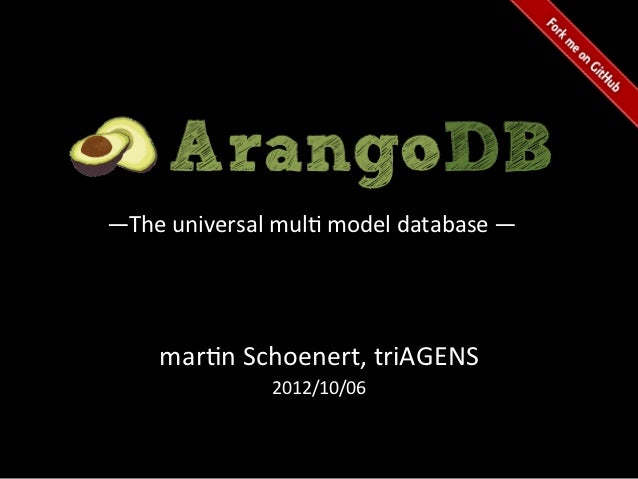

Unfortunately the figures for OrientDB were disappointing, as the database was found to be taking 25x as long as ArangoDB to aggregate over a single collection (for example, computing the age distribution for everyone in the sample network from SNAP’s Pokec).įor specific graph operations such as shortest path analysis, Neo4j scored a win over ArangoDb and OrientDB when ArangoDB used its standard storage engine configuration “MMFiles”, with ArangoDB taking 3x and OrientDB 12x as long to complete the op. In terms of aggregation ArangoDB clearly takes the lead outperforming Neo4j with nearly twice as much throughput.

For single write synchronizations ArangoDB also wins over Neo4j with 50% higher throughput. In terms of single writes the difference was minimal with ArangoDB performing ever so slightly better than OrientDB. What we found however, reflected a completely different picture.įor single reads ArangoDB clearly had higher throughput than Neoj4 or OrientDB, and the difference between them was fairly linear with Neo4j coming in second with 50% less throughput than ArangoDB and OrientDB 50% less than Neo4j. This considered it would be expected that Neo4j has been optimized for graph specific operations such as shortest path and neighbors second, and thus outperform the other two databases. OrientDB and ArangoDB are both native multi-model DBs whereas Neo4j is strictly a graph database. Finally, only ArangoDB and OrientDB have in-memory capabilities for fast information reads, but Neo4j offers pluggable authentication with supported standards such as LDAP, Active Directory or Kerberos, making it easier for corporations to manage access controls with configurations they already have.

This also results in the database exhibiting causal and eventual consistency across clusters when configured to replicate, and immediate consistency only in the stand-alone mode.Īll three databases have ACID transactions but only Neo4j and OrientDB allow for foreign keys to be used, for example the relationships in the graphs. However, Neo4j does not offer sharding or any other partitioning methods like the other two databases and it uses a proprietary Raft protocol to replicate data into causal clusters, rather than master-master or master-slave replication. Neo4j also uses triggers where OrientDB only uses hooks. Neo4j is the only database which allows the user to define procedures and functions for server side scripts whereas the other two databases are limited to standard JavaScript. However, OrientDB is the only database compared here which supports SQL-like queries, and together with Neo4j also support a lot more APIs and a wider variety of programming languages than ArangoDB. All three databases support a variety of operating systems including Linux, OS X and Windows, but only Neo4j offers both schema-based and schema-free data structuring.įor ArangoDB and Neo4j, XML support can be enabled by using a JSON translator whilst OrientDB does not support either making it probably not the best option if you have a lot of XML files. At a first glance the three open source databases compared here look quite similar, but when we looked closer it became clear why Neo4j ranks first, as the most popular graph database. Graph Databases have gained increasing popularity in recent years due to their ability to model complex relationships between objects. Users, roles and permissions, Pluggable authentication with supported standards (LDAP, Active Directory, Kerberos)Īccess rights for users and roles, record level security configurable Immediate consistency (in stand-alone mode)Īccess Control Lists (ACL) per each Arango Server No (but could be achieved with distributed queries)Ĭausal and Eventual Consistency (configurable in causal cluster setup) No (but can be done with procedures stored in JavaScript) Yes, User defined procedures and functions

TinkerPop Stack (with Blueprints, Gremlin, Pipes) We also consider the differences in performance and what costs are associated to running each database on premises or in the cloud, so that it may become clearer and easier to recognize the database that best suits your needs. This is done in an attempt to highlight some of the key differences between otherwise similar technologies.
#Arangodb nosql series
In this edition we conclude our multi-part database blog series by considering Graph database offerings from different vendors. In the last few blogs we examined a variety of different NoSQL databases and considered some of their appropriate domains and use cases.


 0 kommentar(er)
0 kommentar(er)
